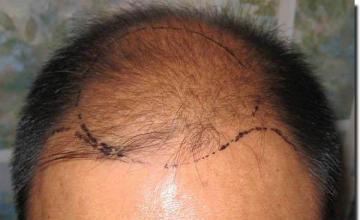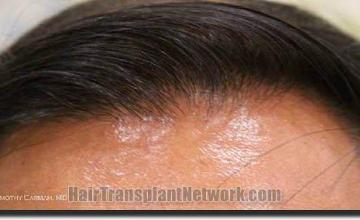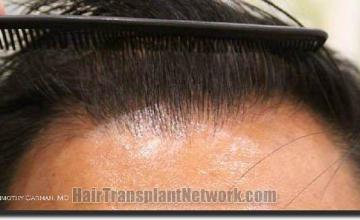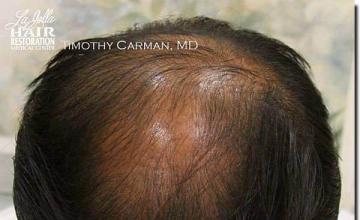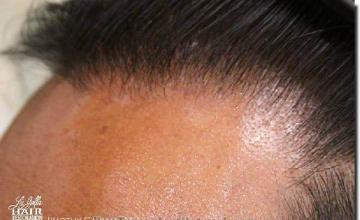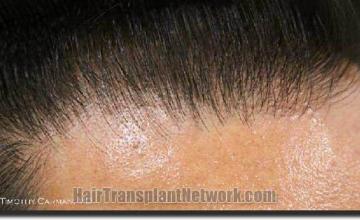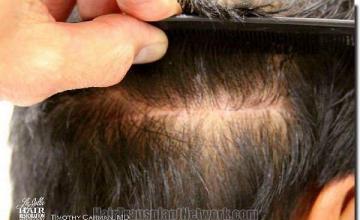Procedure detail
This is a 46 year old hair restoration patient who presented with advanced androgenic alopecia affecting the frontal hairline, frontal forelock, bilateral temples and crown. In addition, he presented with a donor area that was relatively sparse at 70 FU/cm2 (normal being 100 FU/cm2). This presentation is common, and accordingly, in order for the transplant to be "successful", ultimately IMO, we need to choose between concentrating on EITHER the hairline/FF or the crown, but not both. Just "spreading them everywhere" in a desperate attempt at "doing everything at once" can lead to a dilution of the stronger effect that transplanting a limited number of grafts CAN have, as seen in this case. Although limited to only 2000 FU grafts, concentrating on the frontal hairline and frontal forelock as the primary goal during his hair transplant surgery can provide a dramatic change in ones appearance as the grafts grow in. This patient in fact scheduled a second procedure, where now we will address the thinning that occurs behind this area, anterior to the crown. I guess the key point I want to communicate is the importance that each procedure should be "stand alone", even if other procedures are planned, but especially if, for whatever reason, the patient cannot undergo future procedures. The patient is not left in an "in progress" condition.
Bald class

Norwood class 3A
The Norwood Class A patterns are characterized by a predominantly front to back progression of hair loss. These patterns lack the connecting bridge across the top of the scalp and generally have more limited hair loss in the crown, even when advanced.

